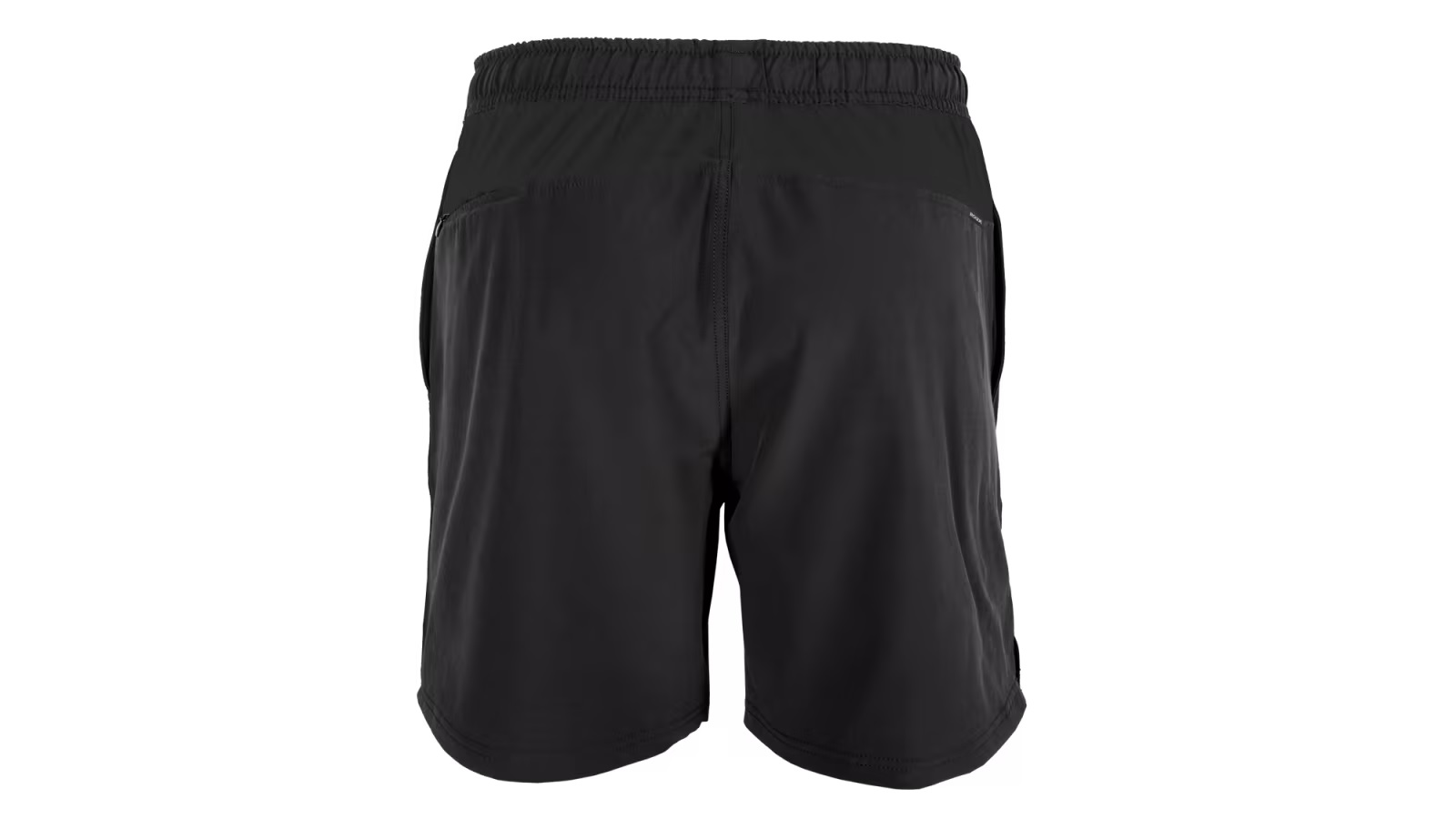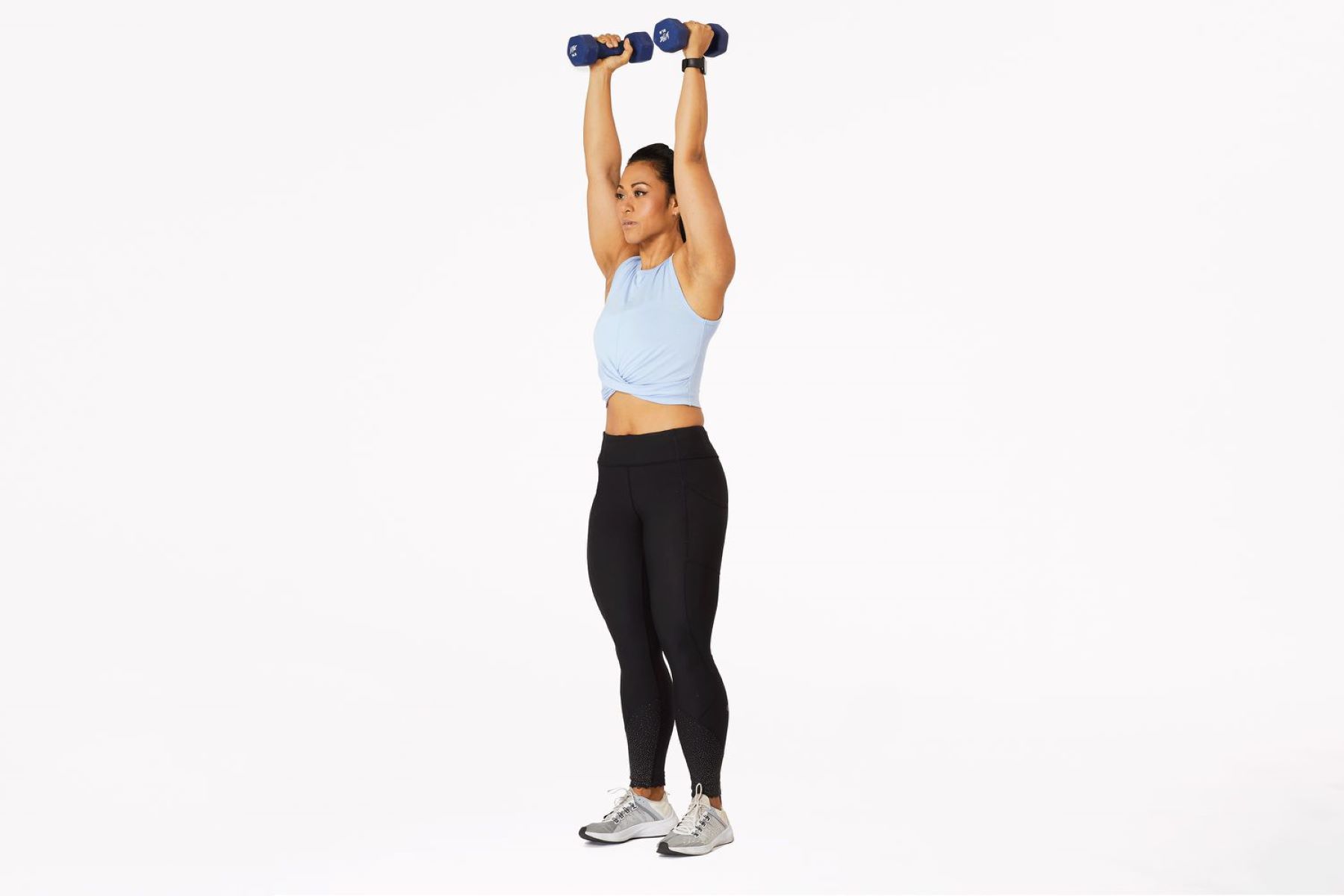

Featured
Why Does My Elbow Hurt When I Workout
Modified: January 2, 2024
Find out why your elbow hurts during workouts and how to alleviate the pain. Discover featured tips and exercises for relieving elbow discomfort.
Introduction
When it comes to working out and staying in shape, it’s not uncommon to experience some discomfort or pain. One area that often gets overlooked is the elbow. Many people find themselves wondering, “Why does my elbow hurt when I workout?”
Elbow pain during workouts can be frustrating and hinder your progress. It’s important to understand the causes of this pain and what steps you can take to prevent and treat it. Whether you’re a beginner or a seasoned fitness enthusiast, knowing how to address elbow pain is crucial for maintaining an effective and injury-free exercise routine.
In this article, we’ll explore the various factors that can contribute to elbow pain during workouts and provide valuable tips on how to prevent and treat it. From overuse and improper technique to specific conditions like tennis elbow and golfer’s elbow, we’ll cover it all. So, let’s dive in and uncover the reasons behind your elbow pain!
Causes of Elbow Pain during Workouts
Elbow pain during workouts can stem from various factors. Understanding the underlying causes is essential for effectively addressing and preventing the discomfort. Let’s take a closer look at some common reasons why your elbow may hurt during exercise:
- Overuse or Repetitive Movements: Engaging in repetitive motions, such as weightlifting, push-ups, or repetitive arm movements in sports like tennis or basketball, can put excessive strain on the tendons and muscles around the elbow joint, leading to pain.
- Improper Technique or Form: Using improper technique or form while performing exercises can place unnecessary stress on the elbow joint and surrounding structures. This can cause pain and increase the risk of injury. It’s crucial to maintain proper alignment and technique to avoid putting excessive strain on the elbow.
- Muscle Imbalances and Weakness: Imbalances in the muscles surrounding the elbow joint, such as the biceps and triceps, can contribute to pain during workouts. Weak muscles and poor stability can result in increased stress on the elbow joint, leading to discomfort.
- Tennis Elbow (Lateral Epicondylitis): Also known as lateral epicondylitis, tennis elbow is a common condition characterized by the inflammation of the tendons in the outer part of the elbow. It can be caused by repetitive motions or overuse of the forearm muscles and tendons.
- Golfer’s Elbow (Medial Epicondylitis): Similar to tennis elbow, golfer’s elbow, or medial epicondylitis, involves the inflammation of the tendons on the inner part of the elbow. It is often caused by repetitive motions or overuse of the forearm muscles, such as those used in golf swings or throwing sports.
- Elbow Bursitis: Bursitis is the inflammation of the bursae, which are small sacs filled with fluid that cushion the joints. When the bursae in the elbow become inflamed, it can cause pain, swelling, and limited range of motion.
- Elbow Tendonitis: Tendonitis refers to the inflammation of the tendons, which connect muscles to bones. When the tendons around the elbow joint become inflamed, it can lead to pain during workouts.
These are just a few examples of the potential causes of elbow pain during workouts. It’s important to identify the specific factor contributing to your discomfort in order to implement the appropriate prevention and treatment strategies.
Overuse or Repetitive Movements
Overuse or repetitive movements are common culprits behind elbow pain during workouts. When you engage in activities that involve repetitive motions, such as weightlifting, push-ups, or sports like tennis or basketball, you put excessive strain on the tendons and muscles around the elbow joint.
This repetitive stress can lead to inflammation, micro-tears, and ultimately, pain. The tendons in the elbow area can become overwhelmed, resulting in conditions like tendonitis or, more specifically, tennis elbow (lateral epicondylitis) or golfer’s elbow (medial epicondylitis).
To prevent and alleviate elbow pain caused by overuse or repetitive movements, consider implementing the following measures:
- Take breaks: Incorporate rest days into your exercise routine to allow your elbow and surrounding muscles to recover. Avoid overloading the joint with excessive repetitive movements without giving it adequate time to heal.
- Modify your workouts: If you’re experiencing elbow pain, consider modifying your exercise routine to reduce the amount of stress placed on the joint. For example, if you frequently perform exercises like push-ups, try using dumbbells or resistance bands instead to engage the muscles without placing as much strain on the elbow.
- Vary your exercises: Instead of focusing solely on one type of activity or exercise, incorporate a variety of movements into your routine. This prevents overuse of specific muscle groups and reduces the repetitive stress on your elbows.
- Strengthen supporting muscles: Strengthening the muscles surrounding the elbow joint can help distribute the workload and reduce strain on the tendons. Incorporate exercises that target the biceps, triceps, and forearm muscles to improve overall stability and support for your elbows.
- Use proper technique and form: Ensure that you are using correct technique and form when performing exercises. This will help to prevent excessive stress on the elbows and promote balanced muscle engagement.
- Listen to your body: Pay attention to any warning signs or discomfort in your elbows. If you start feeling pain during your workouts, it’s crucial to listen to your body and take necessary steps to rest and recover.
By implementing these strategies, you can minimize the risk of overuse injuries and alleviate elbow pain caused by repetitive movements. Remember, it’s important to find a balance between pushing yourself and allowing your body the time it needs to recover and heal.
Improper Technique or Form
Improper technique or form during workouts can place unnecessary strain on the elbow joint and surrounding structures, leading to pain and injury. Regardless of the type of exercise or activity you’re engaged in, using correct technique and form is essential for preventing elbow pain and maintaining overall joint health.
Here are some key considerations to ensure proper technique and form:
- Seek guidance and instruction: If you’re new to a specific exercise or workout routine, it’s beneficial to seek guidance from a qualified fitness professional. They can teach you the proper form and technique to perform exercises correctly, minimizing the risk of elbow pain or injury.
- Maintain proper alignment: Pay attention to your body’s alignment during exercises. Keep your shoulders, elbows, and wrists in line, ensuring that they move in harmony. This helps distribute the load evenly and reduces stress on the elbows.
- Start with lighter weights: When beginning a strength training program, start with lighter weights and focus on mastering the proper form. As you build strength and confidence, gradually increase the weights while maintaining correct technique.
- Control your movements: Avoid using momentum or jerking motions when performing exercises. Maintain control throughout the entire range of motion, emphasizing slow and controlled movements. This not only reduces the risk of elbow pain but also promotes better muscle engagement.
- Engage the appropriate muscle groups: Ensure that you’re engaging the intended muscle groups during each exercise. Improper form can lead to overcompensation by other muscle groups, placing additional stress on the elbows.
- Use proper grip: Pay attention to your grip during exercises, especially those involving weights or equipment. A secure and ergonomically correct grip helps distribute the load evenly and reduces strain on the elbows.
- Listen to your body: If you experience any pain or discomfort in your elbows during exercise, stop immediately and assess your form. It’s not advisable to push through the pain, as it can lead to further injury.
By prioritizing proper technique and form, you can significantly reduce the risk of elbow pain during workouts. It’s essential to be mindful of your body’s alignment, motion control, and muscle engagement to ensure a safe and effective experience.
Muscle Imbalances and Weakness
Muscle imbalances and weakness in the muscles surrounding the elbow joint can contribute to pain during workouts. When certain muscles are stronger or more dominant than others, it can disrupt the balance and put excessive stress on the elbow, leading to discomfort and potential injury.
Here are some factors to consider when addressing muscle imbalances and weakness:
- Identify imbalances: Pay attention to any noticeable differences in muscle strength and size around your elbows. If you notice that certain muscles are weaker or less developed, it’s important to address these imbalances to prevent strain on the elbow joint.
- Target opposing muscle groups: Focus on exercises that target both the muscles on the front and back of your arms. For example, pair bicep exercises with tricep exercises to ensure balanced muscle development and reduce the risk of imbalances that can lead to elbow pain.
- Incorporate stabilization exercises: Include exercises that focus on stability and control of the elbow joint. This can be achieved through exercises like planks, yoga poses, and Pilates movements, which engage the muscles around the elbow while promoting balance and strengthening the joint.
- Use progressive overload: Gradually increase the intensity and resistance of your exercises to promote muscle growth and strength. This progressive overload approach encourages overall muscle development and minimizes the risk of muscle imbalances.
- Allow for proper recovery: Give your muscles adequate time to recover and adapt to the demands of your workouts. This enables them to grow stronger and prevents overuse injuries caused by continuous strain on weak muscles.
- Seek professional guidance: If you’re unsure how to address muscle imbalances or weakness, consider consulting with a fitness professional or physical therapist. They can assess your specific needs and design a targeted exercise program to address and correct any imbalances.
- Stay consistent: Consistency is key when it comes to addressing muscle imbalances and weakness. Make sure to incorporate exercises that target the muscles around your elbows regularly into your workouts to build strength and improve muscular balance over time.
By addressing muscle imbalances and weakness, you can improve overall stability and support for your elbows, reducing the risk of pain and injury during workouts. Remember to progress gradually and be patient as you work towards achieving balanced muscle development.
Tennis Elbow (Lateral Epicondylitis)
Tennis elbow, medically known as lateral epicondylitis, is a common condition that can cause elbow pain during workouts. Despite its name, tennis elbow can occur not only in tennis players but also in individuals who engage in repetitive arm movements or activities that strain the tendons in the outer part of the elbow.
Here are some key factors to consider when dealing with tennis elbow:
- Recognize the symptoms: Tennis elbow is characterized by pain and tenderness on the outside of the elbow. It may worsen during specific movements, such as gripping, lifting, or twisting.
- Rest and avoid aggravating activities: If you suspect you have tennis elbow, it’s important to rest and avoid activities that worsen the pain. Give your elbow adequate time to heal and recover.
- Apply ice and compression: To reduce inflammation and alleviate pain, apply ice or cold packs to the affected area for 15-20 minutes several times a day. Additionally, using compression can help reduce swelling.
- Modify your exercise routine: Temporarily modify or avoid exercises that directly stress the affected tendons. Instead, focus on exercises that do not exacerbate the pain, such as low-impact activities or exercises that target other muscle groups.
- Use proper equipment and technique: Make sure you are using the proper equipment and technique during activities that involve gripping or repetitive arm movements. Incorrect technique or equipment can increase strain on the elbow tendons, aggravating tennis elbow symptoms.
- Physical therapy: Engaging in physical therapy can be highly beneficial for treating tennis elbow. A physical therapist can provide specific exercises and techniques to strengthen the muscles and tendons around the elbow, promote healing, and prevent future recurrences.
- Consider medical interventions: In severe or chronic cases of tennis elbow, medical interventions such as corticosteroid injections or, in rare cases, surgery may be recommended. Consult with a healthcare professional to determine the best course of action for your specific situation.
It’s important to consult with a healthcare professional if you suspect you have tennis elbow. They can provide an accurate diagnosis and recommend an appropriate treatment plan tailored to your needs. With proper treatment and management, tennis elbow can be effectively addressed, allowing you to resume your workouts with reduced pain and improved functionality.
Golfer’s Elbow (Medial Epicondylitis)
Golfer’s elbow, also known as medial epicondylitis, is a condition that can cause pain on the inner side of the elbow. While it is often associated with golfers, it can occur in anyone who repeatedly uses their wrists or clenches their fingers, leading to strain on the tendons that attach to the medial epicondyle.
Here are some important considerations when dealing with golfer’s elbow:
- Identify the symptoms: Golfer’s elbow typically presents as pain and tenderness on the inner side of the elbow, which may worsen with gripping or bending the wrist.
- Rest and avoid aggravating activities: To allow the tendons to heal, it’s crucial to rest the elbow and avoid activities that cause pain. Give your elbow adequate time to recover before gradually reintroducing exercises.
- Apply ice and compression: Applying ice or cold packs to the affected area can help reduce pain and inflammation. Additionally, compression through the use of a band or brace can assist in minimizing swelling.
- Modify your exercise routine: Adjust your workouts to avoid activities that aggravate the condition. Modify exercises that require gripping or excessive wrist flexion, and focus on strengthening other muscle groups in the meantime.
- Stretch and strengthen: Engaging in gentle stretching exercises for the wrist and forearm, as well as targeted strengthening exercises for the muscles around the elbow, can help alleviate symptoms and promote healing.
- Physical therapy: Seeking guidance from a physical therapist can be highly beneficial in treating golfer’s elbow. They can provide targeted exercises, manual therapies, and advice on proper form and technique to aid in the recovery process.
- Consider medical interventions: In severe or persistent cases of golfer’s elbow, medical interventions such as corticosteroid injections or surgery may be considered. Consult with a healthcare professional to discuss your options.
It’s important to be proactive in addressing golfer’s elbow to prevent worsening of symptoms and long-term complications. By following these measures and seeking appropriate care, you can promote healing, relieve pain, and gradually return to your regular exercise routine.
Elbow Bursitis
Elbow bursitis occurs when the bursae, small sacs filled with fluid that cushion the joints, become inflamed in the elbow area. The inflammation can cause swelling, pain, and limited range of motion in the affected elbow. Elbow bursitis can be caused by trauma, excessive pressure on the elbow, repetitive motions, or underlying conditions such as infection or arthritis.
Here are some important considerations when dealing with elbow bursitis:
- Rest and protect the affected elbow: Giving your elbow proper rest is key to allowing the inflammation to subside. Avoid activities that exacerbate the pain or put additional pressure on the elbow.
- Apply ice and compression: Applying ice packs and using compression can help reduce swelling and alleviate pain. Wrap an ice pack in a cloth and gently apply it to the affected area for 15-20 minutes at a time, several times a day.
- Immobilize the elbow if necessary: In more severe cases, your healthcare provider may recommend immobilizing the elbow with a brace or splint to provide support and allow for proper healing.
- Take pain relievers: Over-the-counter pain relievers, such as nonsteroidal anti-inflammatory drugs (NSAIDs), can help reduce pain and inflammation. Follow the recommended dosage and consult with a healthcare professional if necessary.
- Consult a healthcare professional: If the symptoms persist or worsen, it’s advisable to seek medical attention. A healthcare professional can assess the severity of the bursitis and recommend appropriate treatment options, including possible drainage or aspiration of the bursa.
- Address underlying causes: If the bursitis is caused by an underlying condition, such as infection or arthritis, it’s essential to treat the root cause to effectively manage the bursitis. This may involve antibiotics for infection or specific medications for arthritis.
- Physical therapy: Once the acute phase of bursitis has subsided, engaging in physical therapy can help restore strength, flexibility, and range of motion in the affected elbow. A physical therapist can provide exercises and techniques to promote healing and prevent future flare-ups.
It’s important to address and manage elbow bursitis appropriately to minimize pain and improve functionality. Following these measures and seeking medical guidance can help in the effective management and recovery from elbow bursitis.
Elbow Tendonitis
Elbow tendonitis refers to inflammation or irritation of the tendons in the elbow, which connect muscles to bones. It can result from overuse, repetitive motions, or sudden excessive stress on the tendons. Common types of elbow tendonitis include tennis elbow (lateral epicondylitis) and golfer’s elbow (medial epicondylitis), which affect the outer and inner sides of the elbow, respectively. Elbow tendonitis can cause pain, tenderness, and difficulty with certain movements involving the affected arm.
Here are some key considerations when addressing elbow tendonitis:
- Rest and avoid aggravating activities: Giving your elbow ample rest is crucial for tendon healing. Avoid activities that worsen the pain or strain the tendons, such as heavy lifting or repetitive motions.
- Apply ice and compression: Applying ice packs and using compression can help reduce inflammation and alleviate pain. Ice the affected area for 15-20 minutes several times a day, and use compression techniques like a brace or bandage.
- Take pain relievers: Over-the-counter pain relievers, such as NSAIDs, can help reduce both pain and inflammation. Follow the recommended dosage and consult with a healthcare professional if needed.
- Modify your exercise routine: Adjust your workouts to avoid activities that exacerbate the pain or strain the tendons. Incorporate exercises that do not stress the affected tendons, focusing on alternative movements that target other muscle groups.
- Physical therapy: Engaging in physical therapy can be beneficial to address and treat elbow tendonitis. A physical therapist can provide specific exercises, stretches, and techniques that target the affected tendons, promoting healing and improving strength and flexibility.
- Use proper technique and form: Ensure you are using the correct technique and form when performing exercises. Incorrect form can place excessive strain on the tendons, worsening tendonitis symptoms. Seek guidance from a qualified professional if needed.
- Consider medical interventions: In more severe cases of elbow tendonitis that do not improve with conservative measures, medical interventions like corticosteroid injections or, rarely, surgery may be considered. Consult with a healthcare professional to determine the most appropriate course of action.
Dealing with elbow tendonitis can be challenging, but with proper care and management, it can be successfully treated. Be patient and consistent with your treatment plan, and consult with a healthcare professional for guidance and support throughout the recovery process.
Prevention and Treatment of Elbow Pain
Preventing and treating elbow pain is essential for maintaining a healthy and pain-free exercise routine. By implementing a combination of preventive measures and appropriate treatment strategies, you can reduce the risk of elbow injuries and promote optimal joint health. Here are some key approaches to consider:
- Warm-up and stretching: Prior to any workout or physical activity, it’s crucial to warm up the muscles and joints to increase blood flow and flexibility. Engage in dynamic stretches that specifically target the muscles around the elbow to reduce the risk of strain or injury.
- Correct technique and form: Using proper technique and form is vital for preventing undue stress on the elbow joint. Whether you’re lifting weights, performing exercises, or engaging in sports, focus on maintaining good posture and alignment to minimize the risk of injury.
- Strengthening exercises: Incorporate exercises that target the muscles around the elbow, such as bicep curls, tricep dips, and wrist curls. Strengthening these muscles helps to provide better support and stability to the joint.
- Rest and recovery: Allow your body sufficient time to rest and recover between workouts. Overtraining can lead to muscle imbalances, fatigue, and increased risk of injury, including elbow pain. Listen to your body’s signals and give yourself rest days as needed.
- Icing and compression: If you experience mild elbow pain or inflammation after a workout, applying ice packs and using compression techniques can help control swelling and reduce discomfort. Ice the affected area for 15-20 minutes at a time, several times a day, and consider using a compression sleeve or bandage.
- Physical therapy: If you have a history of elbow pain or previous injuries, consider working with a physical therapist to develop a customized exercise program. They can provide guidance on proper technique, strengthening exercises, and stretches to rehabilitate and prevent future issues.
- Medical intervention: In cases where conservative measures don’t alleviate the pain or if there is a severe injury, it may be necessary to consult with a healthcare professional. They can provide a proper diagnosis and recommend appropriate medical interventions, such as medication, injections, or surgery if required.
Remember, prevention is always preferable to treatment. By implementing these preventative measures and addressing any signs of elbow pain promptly, you can maintain a healthy and pain-free exercise routine. If you have persistent or worsening elbow pain, it’s essential to seek medical advice for a proper diagnosis and appropriate treatment.
Warm-up and Stretching
Warm-up and stretching are essential components of any exercise routine and play a crucial role in preventing elbow pain. They help prepare the body for physical activity, increase blood flow, and improve flexibility. Prioritizing a proper warm-up and incorporating effective stretching exercises specifically targeting the muscles around the elbow can significantly reduce the risk of strain or injury. Here’s what you need to know:
- Benefits of Warm-up: Start your workout with a general warm-up activity, such as five minutes of light cardio exercises like brisk walking or jogging. This elevates your heart rate, increases blood flow to the muscles, and raises your body temperature, preparing your body for the upcoming workout.
- Dynamic Stretching: Dynamic stretches are active movements that take your muscles and joints through a full range of motion. Perform dynamic stretches that specifically target the muscles surrounding the elbow, such as arm circles, wrist rotations, or alternating arm swings. These movements help improve joint mobility, increase elasticity in the muscles and tendons, and ready them for the exercises to come.
- Static Stretching: After your workout or at the end of each exercise session, incorporate static stretching. Focus on stretching the major muscle groups around the elbow, including the biceps, triceps, and forearm muscles. Hold each stretch for 15-30 seconds and repeat two to three times for optimal flexibility and injury prevention.
- Wrist and Forearm Stretches: Include wrist and forearm stretches in your routine to maintain flexibility and promote good range of motion in these areas. These stretches may include wrist flexion and extension exercises, where you gently bend your wrist forward and backward, or forearm stretches where you extend your arm in front of you, palm facing down, and use the other hand to pull back on the fingers.
- Gradual Progression: Start with gentle, controlled movements during your warm-up and gradually increase the intensity as you progress. This approach allows your muscles, tendons, and joints to adapt to the demands of your workout, reducing the risk of strains or overuse injuries.
- Listen to Your Body: Pay attention to how your body feels during warm-up and stretching. It’s normal to experience some resistance and mild tension, but avoid pushing through sharp or severe pain. Modify or skip any exercises that cause discomfort, and consult with a healthcare professional if you have any concerns.
Remember, warming up and stretching should be an essential part of your exercise routine. By allocating time for a proper warm-up and incorporating targeted stretches for the muscles around the elbow, you can enhance your performance, reduce the risk of elbow pain, and maintain overall joint health.
Correct Technique and Form
Using correct technique and form during exercises is vital for preventing elbow pain and minimizing the risk of injury. Regardless of the type of exercise or activity you’re engaged in, maintaining proper alignment and form helps distribute the load evenly and reduces stress on the elbow joint. Here are some key considerations for ensuring the correct technique and form:
- Seek Guidance: If you’re new to a specific exercise or unsure about proper form, seek guidance from a qualified fitness professional. They can teach you the correct techniques and help you perform exercises safely and effectively.
- Focus on Proper Alignment: Pay attention to your body’s alignment during exercises. Keep your shoulders, elbows, and wrists in line, ensuring they move in harmony. This promotes proper muscle engagement and decreases the risk of unnecessary stress on the elbows.
- Start with Light Weights: When starting a strength training program, begin with lighter weights. Focus on mastering the correct form and technique before gradually increasing the weights. This allows your muscles and joints to adapt to the demands of the exercise.
- Control Your Movements: Avoid using momentum or jerking motions when performing exercises. Instead, emphasize slow and controlled movements throughout the entire range of motion. This not only reduces the risk of elbow pain and injury but also ensures proper muscle activation.
- Engage the Appropriate Muscle Groups: Pay attention to the muscle groups targeted by each exercise. Make sure you’re engaging the intended muscles with proper form. Incorrect form can lead to overcompensation by other muscle groups, placing additional stress on the elbows.
- Use Proper Grip: Pay attention to your grip during exercises, especially those involving weights or equipment. Use a secure and ergonomic grip that allows for proper muscle activation without excessive strain on the elbows.
- Listen to Your Body: Pay attention to any warning signs or discomfort in your elbows during exercise. If you experience pain or unusual sensations, stop immediately and assess your form. Pushing through pain can lead to further injury, so listen to your body’s signals and reduce the intensity or modify the exercise as needed.
By prioritizing correct technique and form, you can significantly reduce the risk of elbow pain during workouts. Ensuring proper alignment, control, and muscle activation not only protects your elbows but also enhances the effectiveness of your exercises. With practice, these proper techniques will become second nature, allowing you to exercise with confidence and minimize the risk of injury.
Strengthening Exercises
Incorporating strengthening exercises into your workout routine is crucial for maintaining optimal elbow health and preventing pain. Strengthening the muscles around the elbow can improve stability, reduce the risk of overuse injuries, and enhance overall joint function. Here are some key considerations for incorporating effective strengthening exercises:
- Targeted Muscle Groups: Focus on exercises that target the key muscle groups around the elbow joint, including the biceps, triceps, and forearm muscles. These muscles play a significant role in elbow stability and function.
- Bicep Exercises: Incorporate exercises such as dumbbell curls, hammer curls, or chin-ups to target the biceps muscle. These exercises help build strength and improve stability in the front of the upper arm, reducing the strain on the elbow joint during activities.
- Tricep Exercises: Include exercises like tricep dips, tricep pushdowns, or overhead tricep extensions to strengthen the muscles at the back of the upper arms. Strong triceps provide support for the elbow joint and enhance overall arm strength.
- Forearm Exercises: Perform exercises specifically targeting the forearm muscles, such as wrist curls, reverse wrist curls, or farmer’s walks. Strong forearm muscles help to stabilize the elbow joint and improve grip strength.
- Progressive Overload: Gradually increase the intensity and resistance of your strengthening exercises to continuously challenge and stimulate muscle growth. This progressive overload approach helps build strength and resilience in the muscles surrounding the elbow.
- Variety of Exercises: Incorporate a variety of exercises that target different muscle groups and use different movement patterns. This helps avoid muscle imbalances and ensures comprehensive strength development around the elbow joint.
- Proper Form and Technique: Maintain proper form and technique during exercises to ensure optimal muscle activation and reduce the risk of injury. Avoid using excessive weight that compromises form, as this places unnecessary strain on the elbow joint.
- Listen to Your Body: Pay attention to how your elbows feel during and after strengthening exercises. It’s normal to experience some muscle fatigue, but sharp or persistent pain should not be ignored. Adjust the intensity or modify the exercise if necessary to prevent further strain or injury.
Incorporating regular strengthening exercises into your routine is essential for maintaining strong and healthy elbows. By targeting the key muscle groups around the elbow and progressively challenging them, you can enhance joint stability, reduce the risk of pain or injury, and optimize your overall performance during workouts.
Rest and Recovery
Rest and recovery are often overlooked but crucial aspects of any exercise routine. Giving your body sufficient time to rest and recover is essential for preventing elbow pain and maintaining overall health. Here are some important considerations for incorporating rest and recovery into your exercise regimen:
- Rest Days: Plan regular rest days in your weekly workout schedule. These days allow your muscles, joints, and tendons to recover from the stress of exercise. Avoid overtraining, as it can lead to muscle imbalances, fatigue, and increased risk of injury, including elbow pain.
- Listen to Your Body: Pay attention to your body’s signals during and after each workout. If you experience persistent or severe elbow pain, it may be a sign that you need additional rest or modification of your exercise routine. Ignoring these signals can prolong your recovery time and increase the risk of further injury.
- Proper Sleep: Aim for a consistent and adequate amount of sleep each night. Sleep is when your body repairs and rejuvenates itself, including the muscles and connective tissues around the elbow. Insufficient sleep can impair recovery and hinder your overall performance.
- Active Recovery: Engage in light, low-impact activities on your rest days to promote blood flow and aid in recovery. Activities such as walking, swimming, or gentle stretching can help reduce muscle soreness and improve circulation without placing excessive strain on the elbows.
- Nutrition and Hydration: Proper nutrition and hydration play a significant role in recovery. Fuel your body with a balanced diet rich in nutrients, including lean proteins, healthy fats, and complex carbohydrates. Stay hydrated by drinking an adequate amount of water throughout the day to support optimal muscle and tissue function.
- Self-Care Practices: Incorporate self-care practices such as foam rolling, stretching, or massage therapy into your routine. These activities can help alleviate muscle tension and promote relaxation in the muscles surrounding the elbow.
- Periodization: Implement a well-structured exercise program that includes periods of progressive training followed by lighter, recovery-focused phases. This approach allows for proper adaptation and recovery, reducing the risk of overuse injuries and fatigue.
- Manage Stress: High levels of stress can hinder recovery and increase the risk of injury. Incorporate stress management techniques such as meditation, yoga, or hobbies that help you relax and unwind. Prioritizing mental well-being contributes to overall physical recovery.
Rest and recovery are vital parts of any successful exercise routine. By incorporating these practices into your routine, you allow your body the necessary time to repair, rebuild, and restore itself, ultimately reducing the risk of elbow pain and promoting long-term joint health.
Icing and Compression
Icing and compression are effective techniques for managing elbow pain and reducing inflammation. These strategies can be particularly helpful after intense workouts or in the presence of acute injuries. Here’s what you need to know about icing and compression:
- Icing: Applying ice to the affected area can help reduce pain, swelling, and inflammation in the elbow. Ice works by constricting blood vessels and numbing the area, which can provide immediate relief. Use an ice pack or a bag of ice wrapped in a thin cloth and apply it to the affected area for 15-20 minutes at a time, several times a day.
- Compression: Compression involves applying pressure to the affected elbow using a compression bandage, sleeve, or brace. Compression helps to reduce swelling by preventing the build-up of fluid in the tissues. It also provides support to the elbow joint, enhancing stability and promoting healing.
- Ice and Compression Combination: Combining ice and compression can enhance the effectiveness of both techniques. After icing the elbow, wrap it with a compression bandage or wear a compression sleeve. The compression helps to keep the ice pack in place and maintain pressure, maximizing the benefits of both methods.
- Timing: Apply ice and compression as soon as possible after a workout or when you notice pain or swelling in the elbow. Immediate application helps to minimize inflammation and can speed up the recovery process.
- Dosage and Frequency: Ice and compression should be used in moderation and according to your specific needs. Aim for 15-20 minutes of icing at a time, with at least a 45-minute break in between sessions to prevent tissue damage. Continuously wearing a compression sleeve should also be done in moderation to avoid interfering with circulation or causing discomfort.
- Caution: It’s crucial to use caution when icing and compressing the elbow. Do not apply ice directly to the skin; always use a thin cloth or towel as a barrier. Avoid wearing a compression bandage or sleeve that is too tight, as it can restrict blood flow. If you experience increased pain, numbness, or any adverse reactions, discontinue use and consult with a healthcare professional.
- Post-workout Routine: Incorporating icing and compression into your post-workout routine can help reduce post-exercise inflammation and minimize muscle soreness. Consider incorporating these techniques as part of your cool-down routine to aid in recovery.
Icing and compression are simple yet effective methods for managing elbow pain and promoting recovery. By utilizing these techniques properly and consistently, you can alleviate discomfort, reduce inflammation, and support the healing process in your elbows.
Physical Therapy
Physical therapy is a valuable resource for individuals experiencing elbow pain or recovering from elbow injuries. It involves the use of specialized exercises, manual therapies, and other interventions to address pain, restore function, and prevent further injuries. Seeking guidance from a physical therapist can be highly beneficial for managing and rehabilitating elbow conditions. Here’s what you need to know about physical therapy for elbow pain:
- Assessment and Individualized Treatment: A physical therapist will assess your specific condition, medical history, and functional goals to design a personalized treatment plan. This plan may include targeted exercises, manual therapy techniques, and other interventions tailored to your needs.
- Strengthening and Range of Motion Exercises: Physical therapists prescribe exercises aimed at strengthening the muscles around the elbow joint and improving range of motion. These exercises target specific muscle imbalances, weaknesses, or limitations to restore optimal function and stability.
- Manual Therapy: Manual therapy techniques, such as joint mobilizations and soft tissue manipulation, may be utilized by a physical therapist to increase flexibility, improve joint mobility, and alleviate muscle tightness or adhesions around the elbow.
- Functional Training: Physical therapists often integrate functional training exercises into your rehabilitation program. These exercises simulate real-life movements and activities to improve your ability to perform daily tasks and return to sports or specific occupational demands.
- Pain Management: Physical therapists can employ various pain management techniques, such as ultrasound, electrical stimulation, or heat/cold therapy, to help alleviate pain and reduce inflammation in the elbow.
- Education and Prevention: A key component of physical therapy is education on proper body mechanics, ergonomic considerations, and injury prevention strategies. This knowledge empowers you to make informed choices and reduces the risk of future elbow injuries.
- Care Continuity: Physical therapists work closely with other healthcare professionals, such as orthopedic surgeons or sports medicine physicians, to ensure comprehensive care. They collaborate on treatment plans and communicate progress, providing a holistic approach to elbow pain management.
- Home Exercise Program: Your physical therapist will likely provide you with a home exercise program tailored to your specific needs. Consistently following this program can help to maintain gains made during therapy sessions and promote continued recovery.
Physical therapy can be a highly effective and valuable approach for managing and rehabilitating elbow pain. With the guidance and expertise of a physical therapist, you can regain strength, mobility, and function in your elbow, enabling you to return to your normal activities with reduced pain and improved overall performance.
Medical Intervention
In some cases, medical intervention may be necessary to address persistent or severe elbow pain that does not respond to conservative measures. Consulting with a healthcare professional can help determine the most appropriate course of action for your specific condition. Here are some medical interventions that may be considered for elbow pain:
- Corticosteroid Injections: Corticosteroid injections may be recommended for reducing inflammation and providing temporary pain relief in certain elbow conditions, such as tendonitis or bursitis. These injections are typically administered directly into the affected area under the guidance of a healthcare professional.
- Surgical Intervention: In rare cases where conservative treatments are ineffective, surgery may be considered. The specific procedure will depend on the underlying cause of the elbow pain. Surgical interventions can involve repairing tendons, removing damaged tissues, or addressing structural abnormalities.
- Arthroscopy: Arthroscopy is a minimally invasive surgical procedure that utilizes small incisions and a camera to diagnose and treat elbow joint conditions. It allows the surgeon to visualize and address issues such as loose bodies, cartilage damage, or ligament tears.
- PRP or Stem Cell Therapy: Platelet-rich plasma (PRP) therapy and stem cell therapy are regenerative medicine techniques that involve using a patient’s own blood or cells to promote healing and tissue repair. These treatments may be considered for certain elbow conditions, although their specific efficacy is still being researched.
- Antibiotics: In cases where elbow pain is caused by an infection, such as septic bursitis, antibiotics may be prescribed to eliminate the infection and reduce inflammation.
- Collaborative Approach: Healthcare professionals, such as orthopedic surgeons, sports medicine physicians, and physical therapists, may work together to develop a comprehensive treatment plan that incorporates both non-invasive and invasive interventions to address elbow pain effectively.
- Post-Intervention Rehabilitation: Following medical intervention, a rehabilitation program supervised by a physical therapist may be prescribed. The program will aim to regain mobility, strength, and functionality in the elbow joint, facilitating a smooth recovery process.
It’s important to note that medical intervention is typically reserved for cases where conservative measures have been exhausted or when there is a severe or persistent underlying issue. Consulting with a healthcare professional is crucial to determine the most appropriate intervention for your specific condition, given your medical history and individual circumstances.
Conclusion
Elbow pain during workouts can be frustrating and hinder your progress towards your fitness goals. Understanding the causes of elbow pain and implementing preventive measures are crucial for maintaining an effective and injury-free exercise routine.
In this article, we explored various factors that can contribute to elbow pain, including overuse or repetitive movements, improper technique or form, muscle imbalances and weakness, as well as specific conditions like tennis elbow and golfer’s elbow. By identifying the underlying causes and implementing the appropriate prevention and treatment strategies, you can reduce the risk of elbow pain and promote overall joint health.
Key preventive measures include performing a proper warm-up and incorporating stretching exercises to prepare the muscles and joints, practicing correct technique and form during exercises to reduce strain on the elbows, and including strengthening exercises to improve stability and support in the elbow joint.
If you experience elbow pain, it is important to listen to your body, rest, and apply ice and compression to reduce inflammation. Seeking guidance from a physical therapist can provide targeted exercises, manual therapies, and education to aid in recovery and prevent future injuries.
In some cases, medical intervention may be necessary, including corticosteroid injections, surgical procedures, or regenerative treatments. It is essential to consult with a healthcare professional to determine the most appropriate intervention for your specific condition.
Remember, prevention is always better than treatment. By incorporating these strategies into your exercise routine and seeking appropriate care, you can reduce the risk of elbow pain, promote healing, and maintain a healthy and pain-free exercise regimen.









